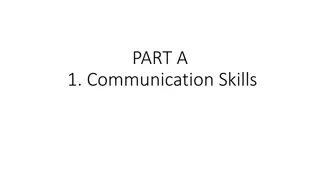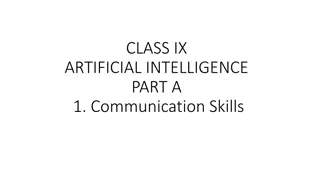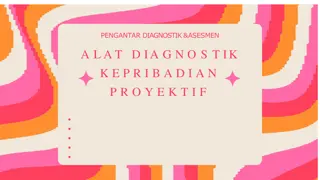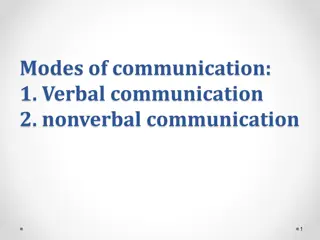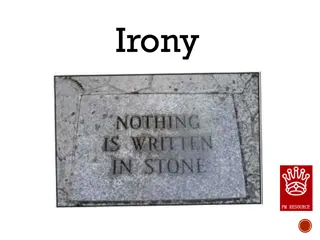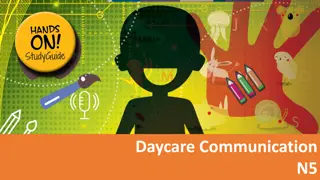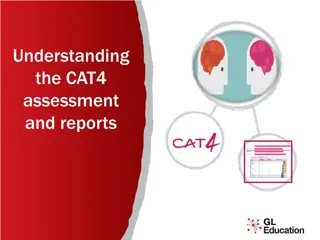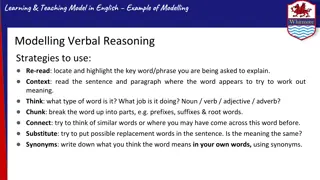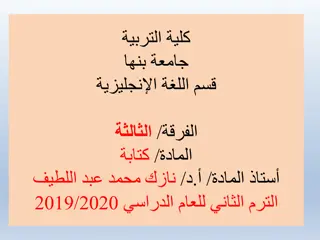VERBAL PROBLEMS
Math is all about solving problems, and verbal problems are common in various fields. Follow these steps to tackle verbal problems effectively: Read, identify facts, understand the task, eliminate unnecessary info, pay attention to units, draw diagrams, use formulas, consult references, do calculations, and check your answer. Practice with a sample problem provided.
Download Presentation

Please find below an Image/Link to download the presentation.
The content on the website is provided AS IS for your information and personal use only. It may not be sold, licensed, or shared on other websites without obtaining consent from the author.If you encounter any issues during the download, it is possible that the publisher has removed the file from their server.
You are allowed to download the files provided on this website for personal or commercial use, subject to the condition that they are used lawfully. All files are the property of their respective owners.
The content on the website is provided AS IS for your information and personal use only. It may not be sold, licensed, or shared on other websites without obtaining consent from the author.
E N D
Presentation Transcript
VERBAL PROBLEMS By: Rebecca Blitzer
MATH IS ALL ABOUT SOLVING PROBLEMS Some think that math is solely about moving numbers and letters around, but math is all about SOLVING PROBLEMS Many real-world problems are written in words Verbal problems can be uncovered in Astronomy, Geography, Health, Physical Health, etc
STEPS FOR SOLVING VERBAL PROBLEMS 1. Read the problem (Don t jump to any conclusions about the answer until you fully understand what the problem is asking) 2. Identify and list the facts (make a list of facts that are given in the problem/ story) 3. Figure out exactly what the problem is asking you to do (know what you are trying to find: sometimes the problem simply states what they are asking for and sometimes one needs to assess what the problem is asking for) 4. Eliminate excess information (the problem may include some information that is not important to the solution, so eliminate that information)
STEPS (CONTINUED) Pay attention to units of measurements (sometimes you may need to convert the given information into different units- for example, from inches to square meters; using table of conversions, an online calculator, or your own memory in order to know the conversion calculators) 5. Draw a diagram (if necessary, to help you visualize a problem) 6. Find or develop a formula (in some problems you create a formulas or you utilize a commonly used formula- ie: Celsius to Fahrenheit formula) 7. Consult a reference (if you are stuck when solving a problem or do not know where to start, consult a useful reference- a textbook, a conversion chart, or even the internet- but be aware of the type of source that you use) 8. Do the math and check your answer (check your calculations and look back at the problem - you should be able to assess if your solution is outrageously high or low) 9.
QUESTION 1: Jane spent $42 for shoes. This was $14 less than twice what she spent for a blouse. How much was the blouse? -Every word problem has an unknown number, in this problem it is the price of the blouse, we will let ? represent the price of the blouse. -In order to solve this verbal problem, we need to develop and equation
QUESTION 1 (CONTINUED): The problem directly states "This" -- that is, $42 -- was $14 less than two times x (the price). Creating the equation would give us : 2? 14 = 42 2? = 42 + 14 2? = 56 ? =56 2 ? = 28 Since we are solving for the price in American dollars, the solution is the blouse costs $28.00. Checking our answer: simply plug 28 into our equation for ?. 2 28 14 = 42 56 14 = 42 42 = 42
QUESTION 2: A group of 266 persons consists of men, women, and children. There are four times as many men as children, and twice as many women as children. How many of each are there? In order to solve we assess what information we are given: 266 persons consisting of men, women, and children Four times as many men as children Twice as many women as children How many of each are there?
QUESTION 2 (CONTINUED): Let ? = ? ? ?????? ?? ? ?????? 4? = ? ? ?????? ?? ??? 2? = ? ? ?????? ?? ????? Forming the equation: ? + 4? + 2? = 266 Solving for x: 7? = 266 Now 38 IS NOT the only solution, in order to figure out the solutions, we need to plug 38 into each of the initial equations we formed for men, women, and children Plugging in : 4 38 = 152 ??? 2 38 = 76 ????? ? = 38 The solutions are: Within the group of 266 people, there are 38 children, 152 men, and 76 women.
Checking the Answer (Question 2): In order to figure out if the answer is correct, we will substitute x back into the equation to check and see if it the left hand side of the equation equals the right hand side of the equation (266) ? + 4? + 2? = 266 Plugging in ? = 38 back into the equation: 38 + 4 38 + 2 38 = 266 38 + 152 + 76 = 266 266 = 266 Thus, within the group of 266 people, there are 38 children, 152 men, and 76 women.
QUESTION 3: Peter has six times as many dimes as quarters in her piggy bank. She has 21 coins in her piggy bank totaling $2.55 How many of each type of coin does she have?
Question 3 (continued): In order to solve this verbal problem, we need to assign ? to something: Since one quarter equals 25 cents, ? quarters equals ? 25 cents or 25? cents Since one dime equals 10 cents, 6? dimes equals 6? 10 cents or 60? cents Since one 1 dollar equals 100 cents, 2.55 dollars equals 2.55 100 = 255 cents Putting it all together, we form the equation: 25? cents + 60? cents = 255 cents 85? cents = 255 cents 85? ????? 85 ????? =255 cents ? = 3 85 ????? 6 ? = 6 3 = 18 Therefore Peter has 3 quarters and 18 dimes
Checking our Solution: In order to check our solution, we simply plug ? back into our equation and see if the right- hand side equals the left- hand side: 25? ????? + 60? ????? = 255 ????? 25 3 ????? + 60 3 ????? = 255 ????? 75 ????? + 180 ????? = 255 ????? 255 ????? = 255 ????? Seeing as the left-hand side equals the right-hand side, the solution we gained stands: Thus, Peter has 3 quarters and 18 dimes.
QUESTION 4: The area of a rectangle is 24 cm2. The width is two less than the length. What is the length and width of the rectangle?
QUESTION 4 (CONTINUED): Let x be the first number. Ley y be the second number x + y = 16 x - y = 4 Solve the system of equations by elimination Adding the left sides and the right sides gives: x + x + y + -y = 16 + 4 2x = 20 x = 10
QUESTION 4 (CONTINUED): Since x + y = 16, 10 + y = 16 10 + y = 16 10 - 10 + y = 16 - 10 y = 6 CHECK: In order to check if our solutions for x and y are correct, we plug x and y back into our equations for us to see if they are correct. x + y = 16 10 + 6 = 16 Thus, x= 10 and y = 6. 10 + y = 16 10 + 6 = 16
QUESTION 5: A pharmacist needs to fill an order for a 3% lidocaine topical cream. However, only 2% and 5% concentrations are in stock. How much of the 5% concentration should be mixed with 50 g of the 2% concentration to get a 3% concentration? Check your answer. Solution: We are going to let x= the amount of 5% concentration. The 5% concentration is mixed with the 2% concentration get the 3% concentration, the amount of 3% will be x+50. In other words, the basic equation for this problem is (amount of 5%) + (amount of 2%) = (amount of 3%) x + 50 = x + 50 Including the concentrations, the above equation becomes: 5%(x) + 2%(50) = 3%(x + 50) Rewriting the percents as decimals: 0.05x + 0.02(50) = 0.03 (x+50) Simplifying: 0.05x + 1 = 0.03x + 1.5
CONTINUATION Solving for x: Subtracting 0.03x from both sides: Subtracting 1 from both sides: Dividing both sides by 0.02 results in: Therefore, the pharmacist must take 25 g of the 5% lidocaine concentration and add it to 50g of the 2% concentration, yielding 75g of a 3% lidocaine blend. 0.05x + 1 = 0.03x + 1.5 0.02x + 1 = 1.5 0.02x = 0.5 x= 25
Check The equation for this problem is 5%(x) + 2%(50) = 3% (x + 50). 5% (25) + 2% (50) = 3% (25 + 50) Substitute x = 25 0.05 (25) + 0.02 (50) = 0.03 (25 + 50) Write percents as decimals 1.25 + 1 = 0.03 (75) Simplify 2.25 = 2.25 Checks
As you can see, there are many forms of verbal problems within math and the real world. In the worksheet for this workshop, you will get to work out more examples and applications to supplement what you have learned here.


